Archive
2020
KubaParis
Straße im Sonnenlicht
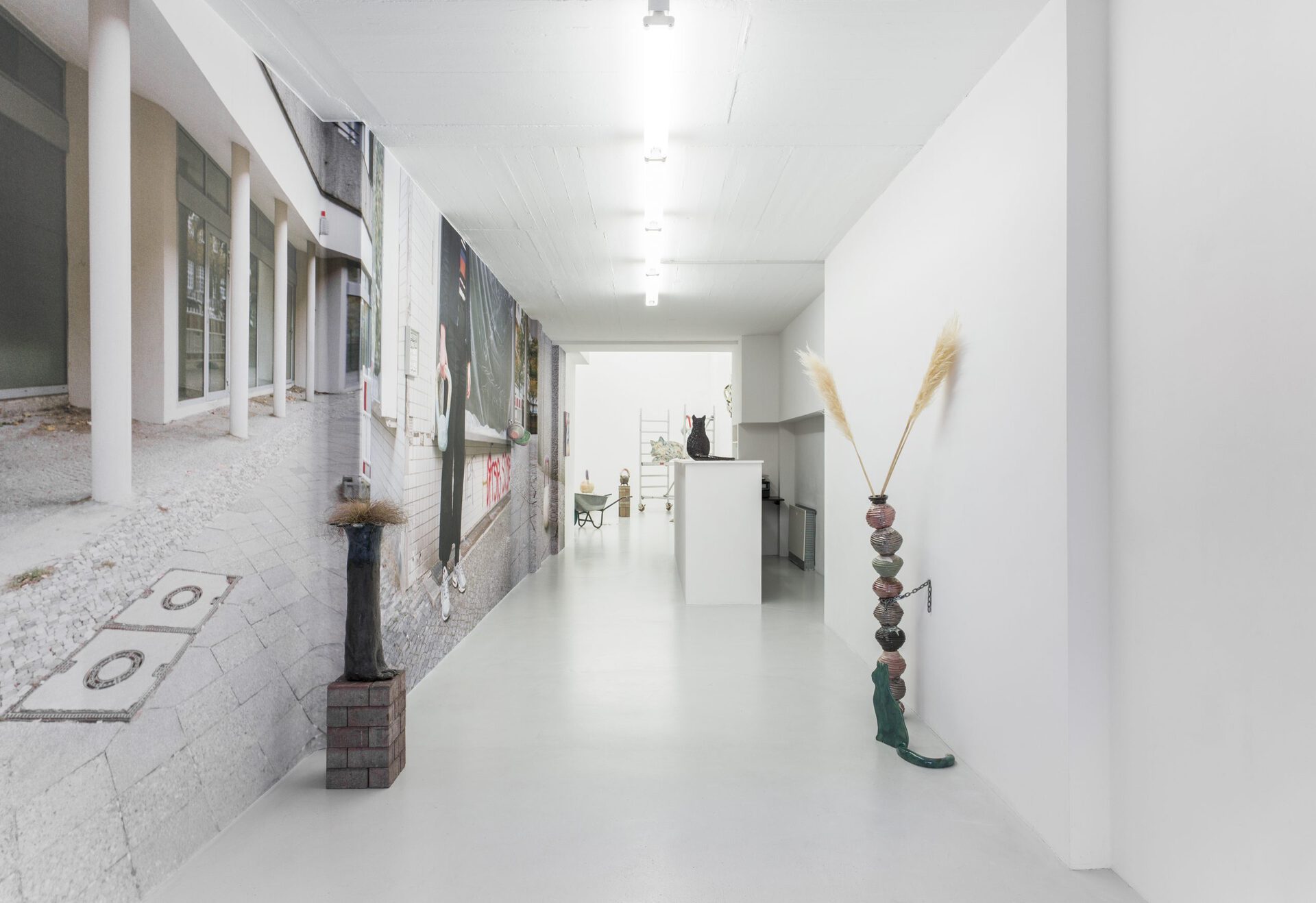

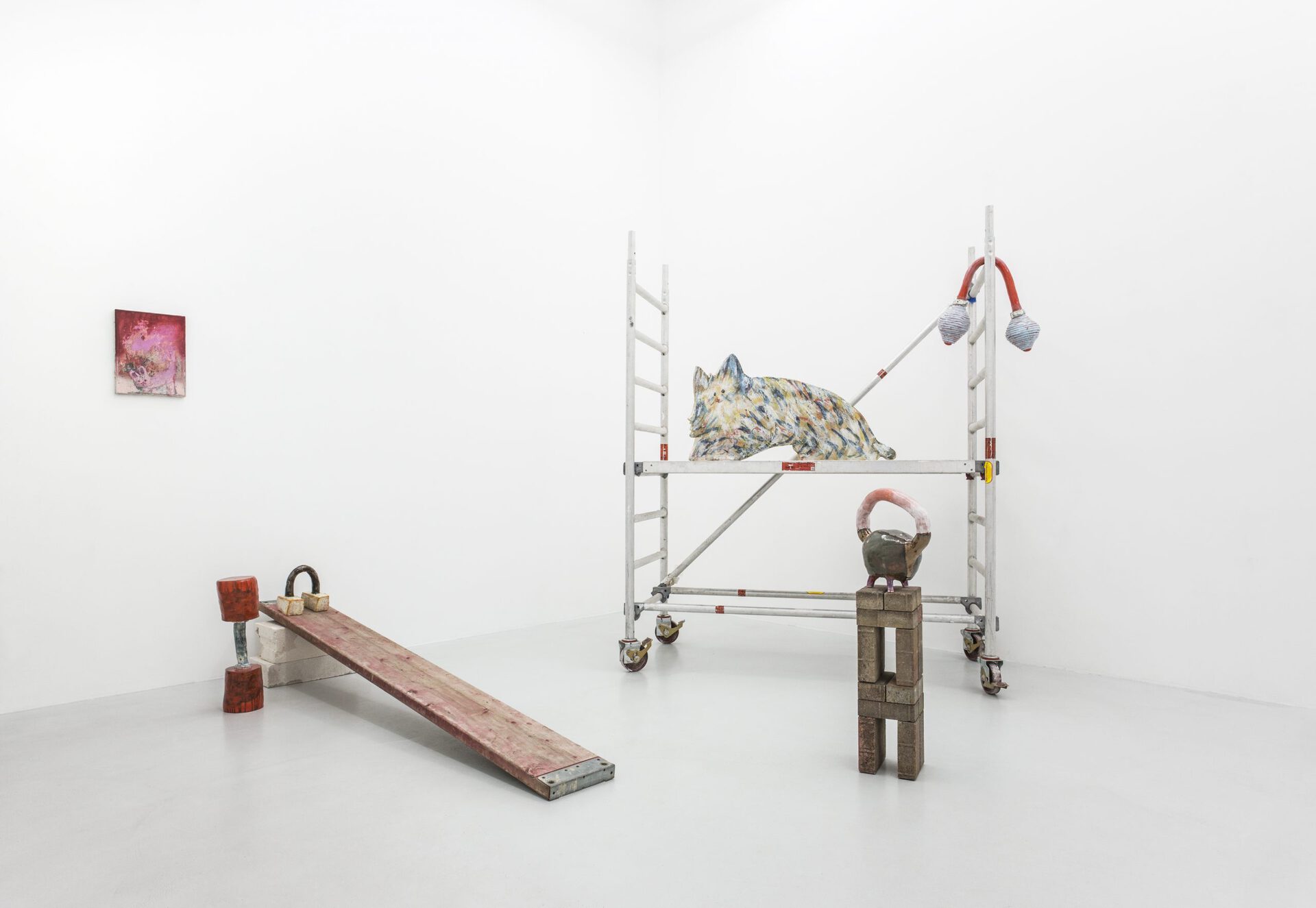

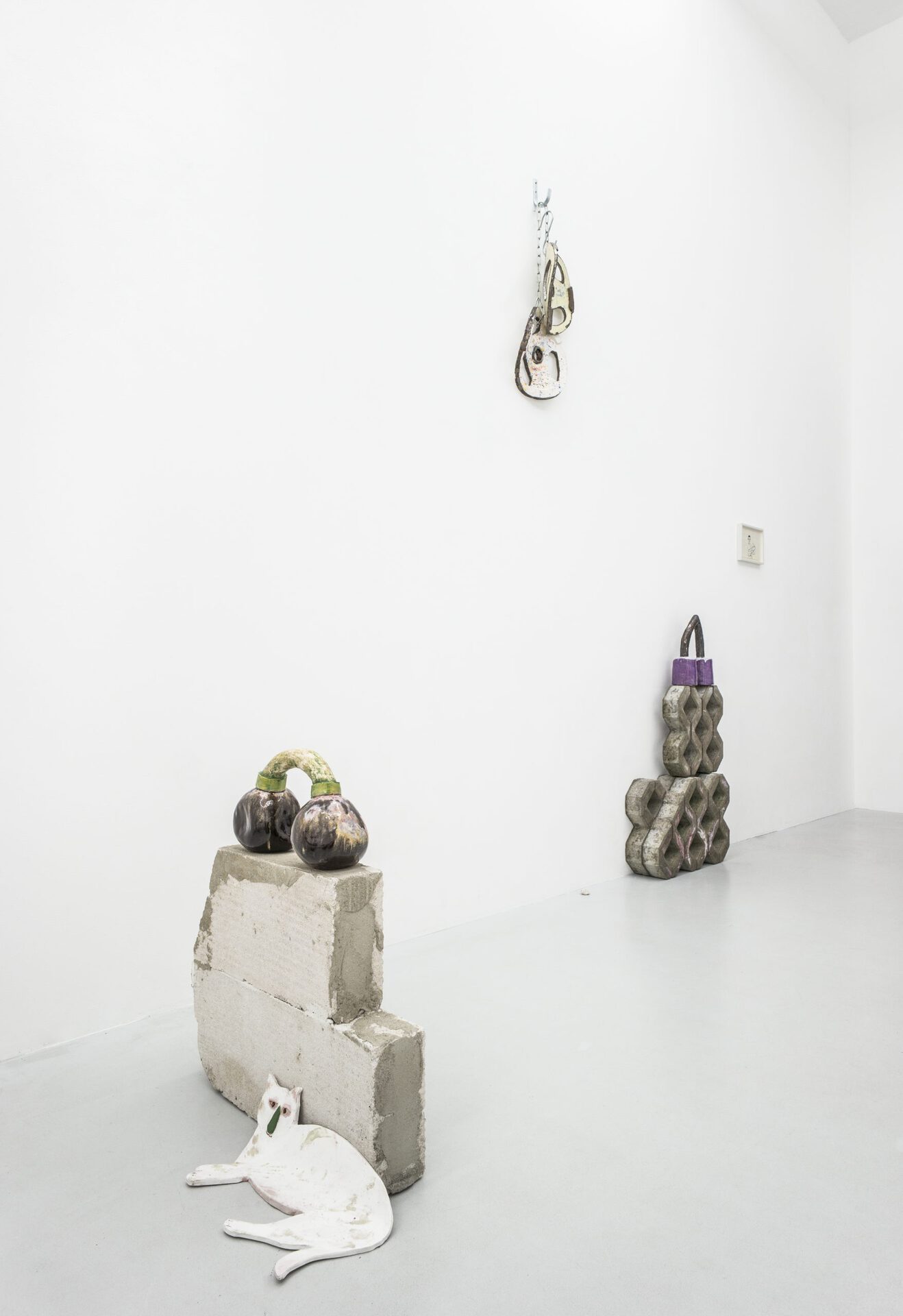
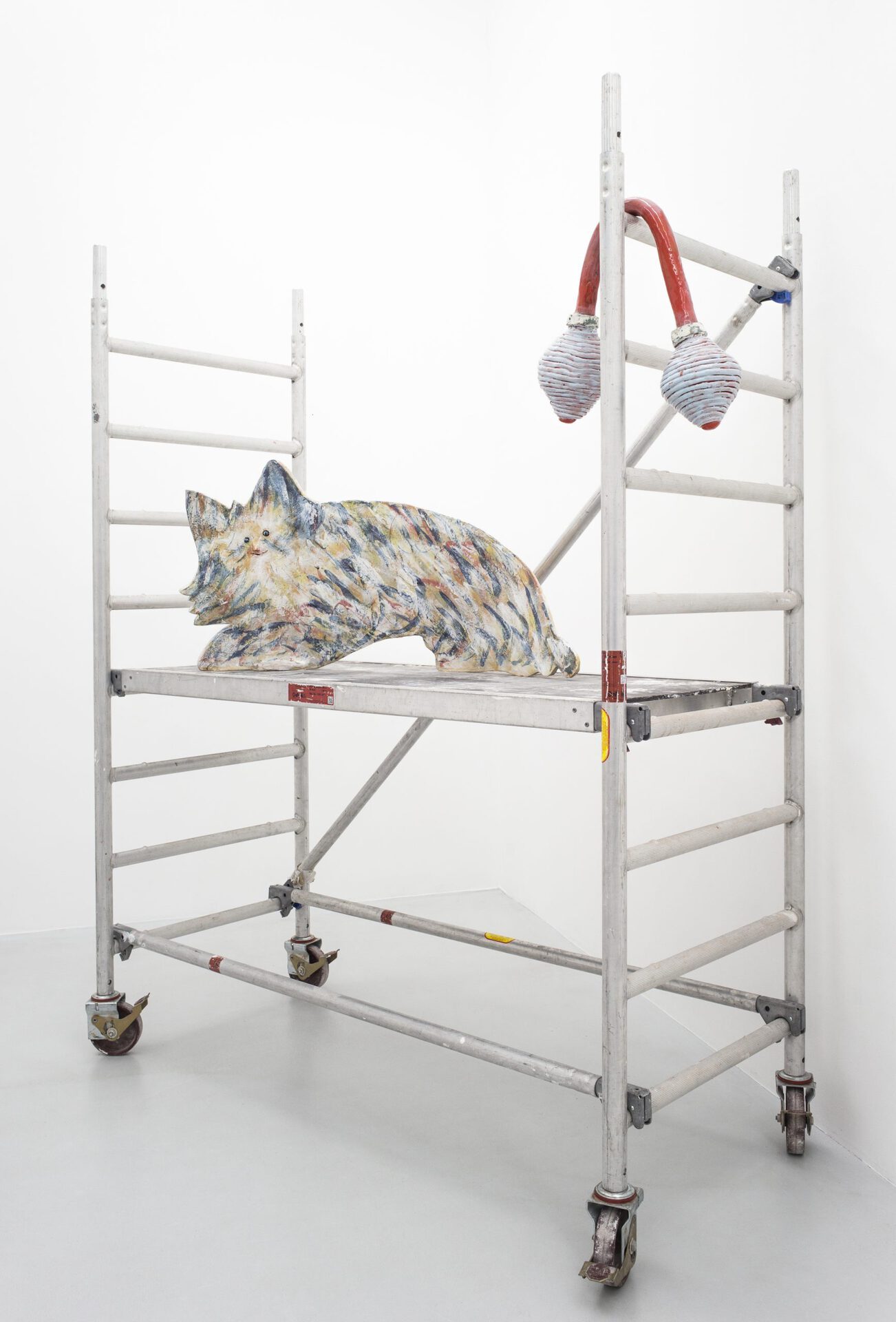
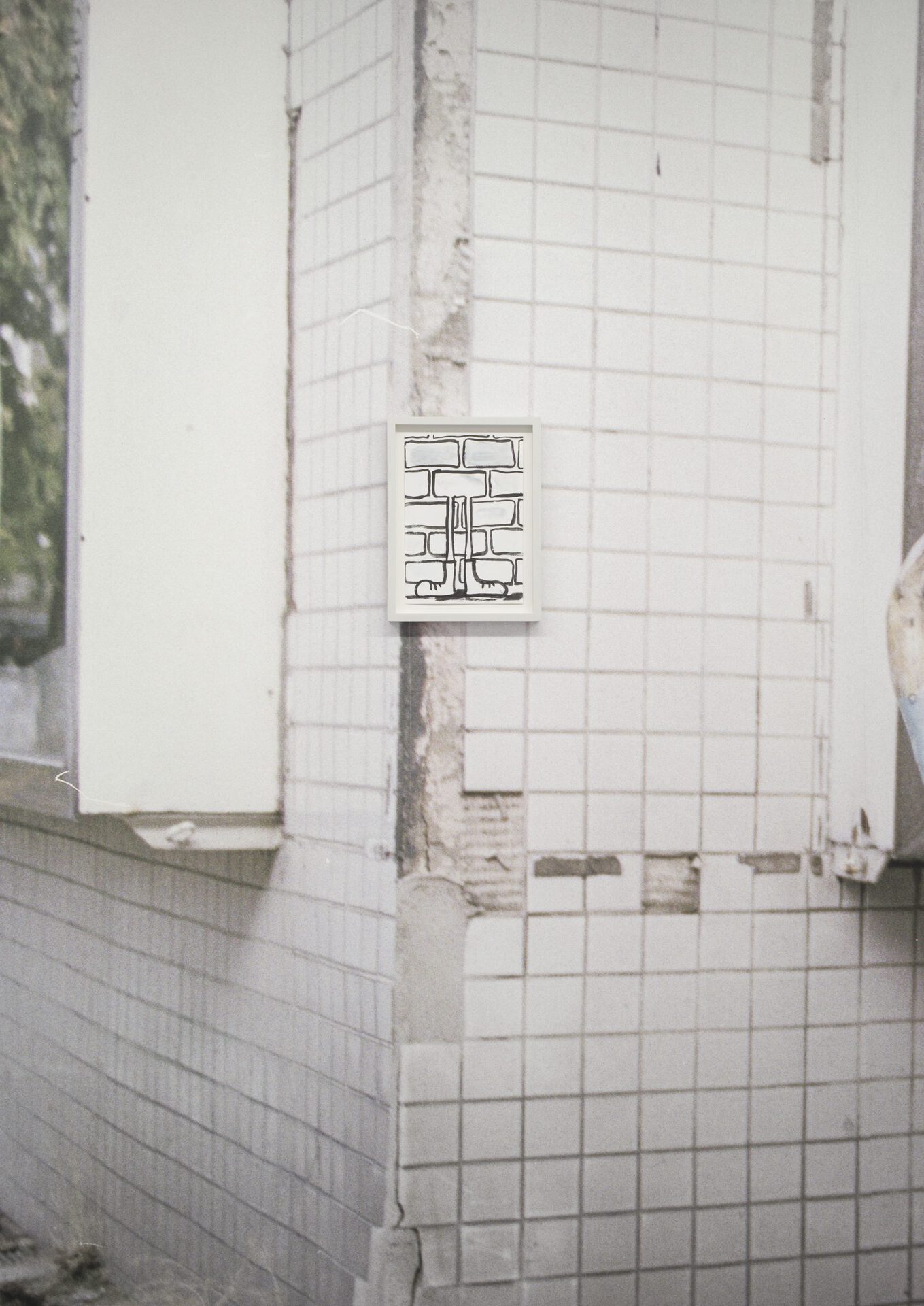


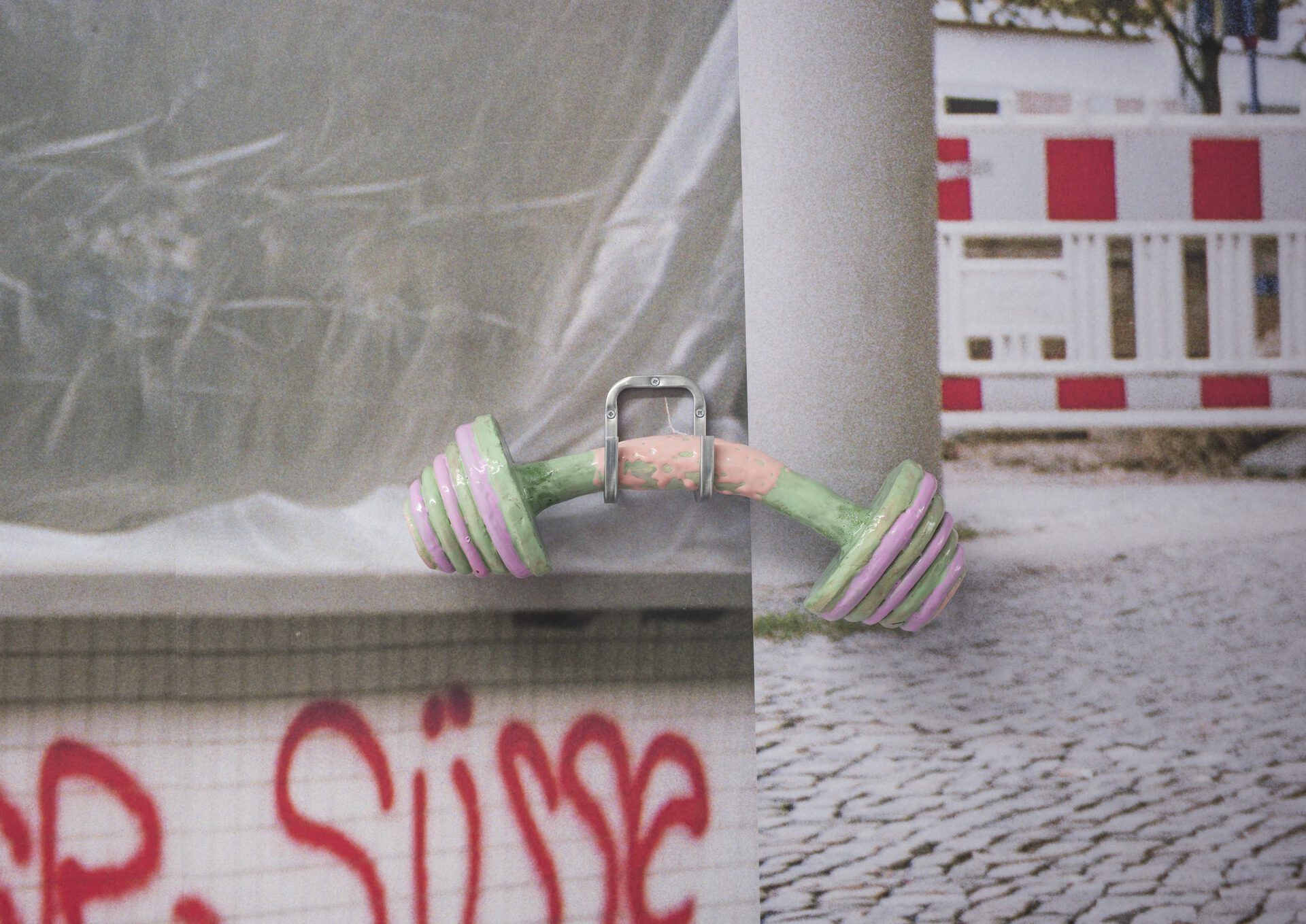
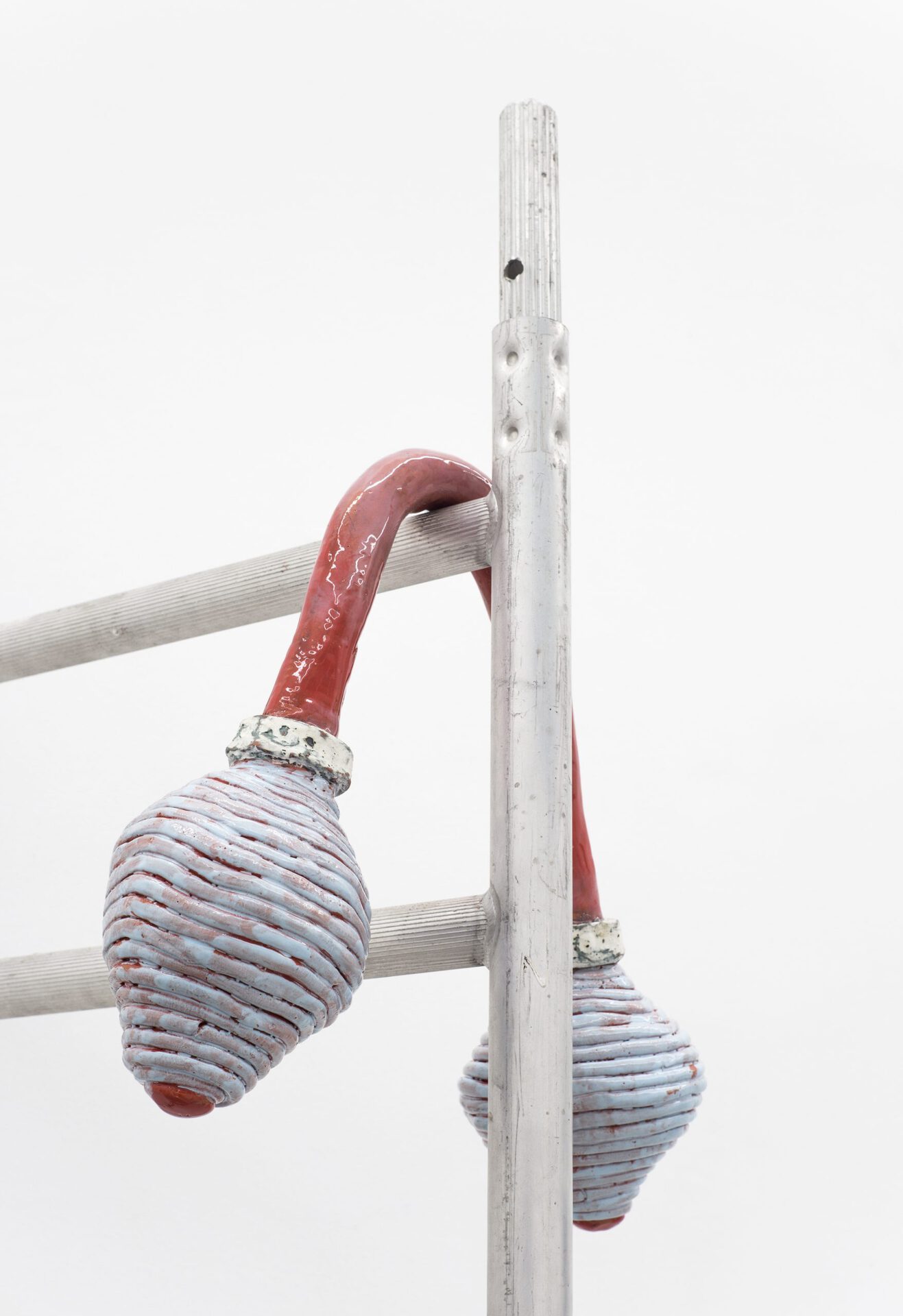


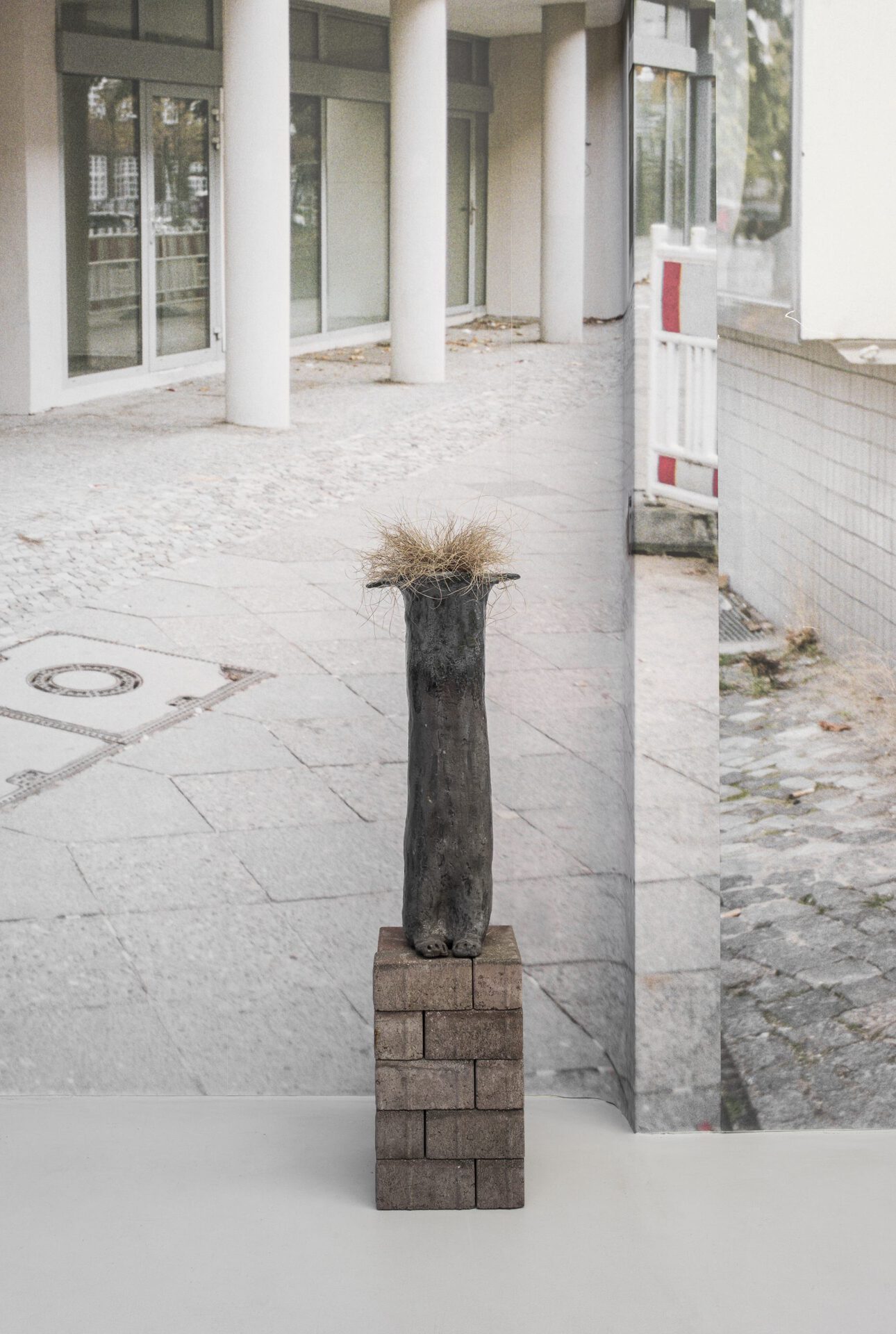


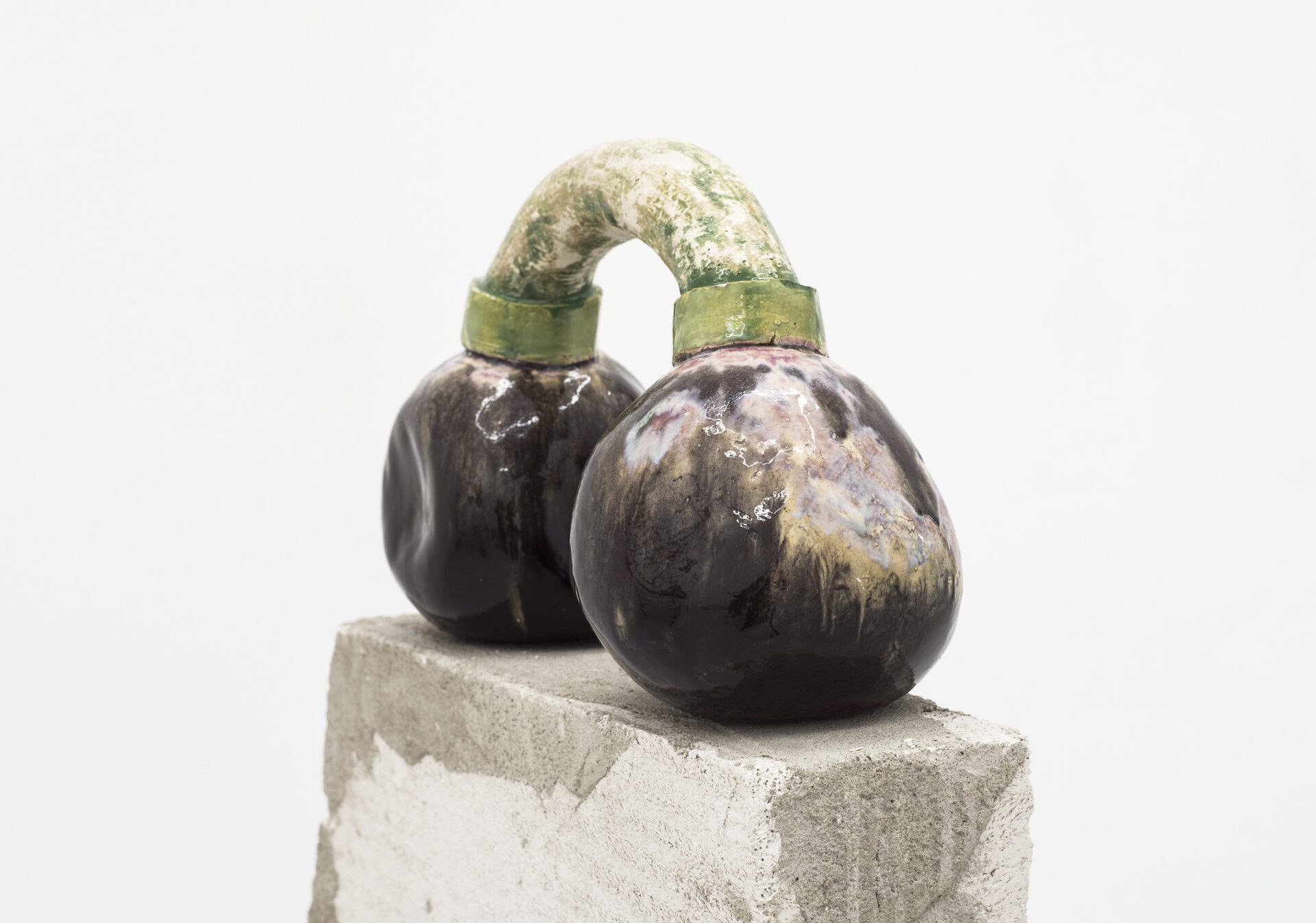

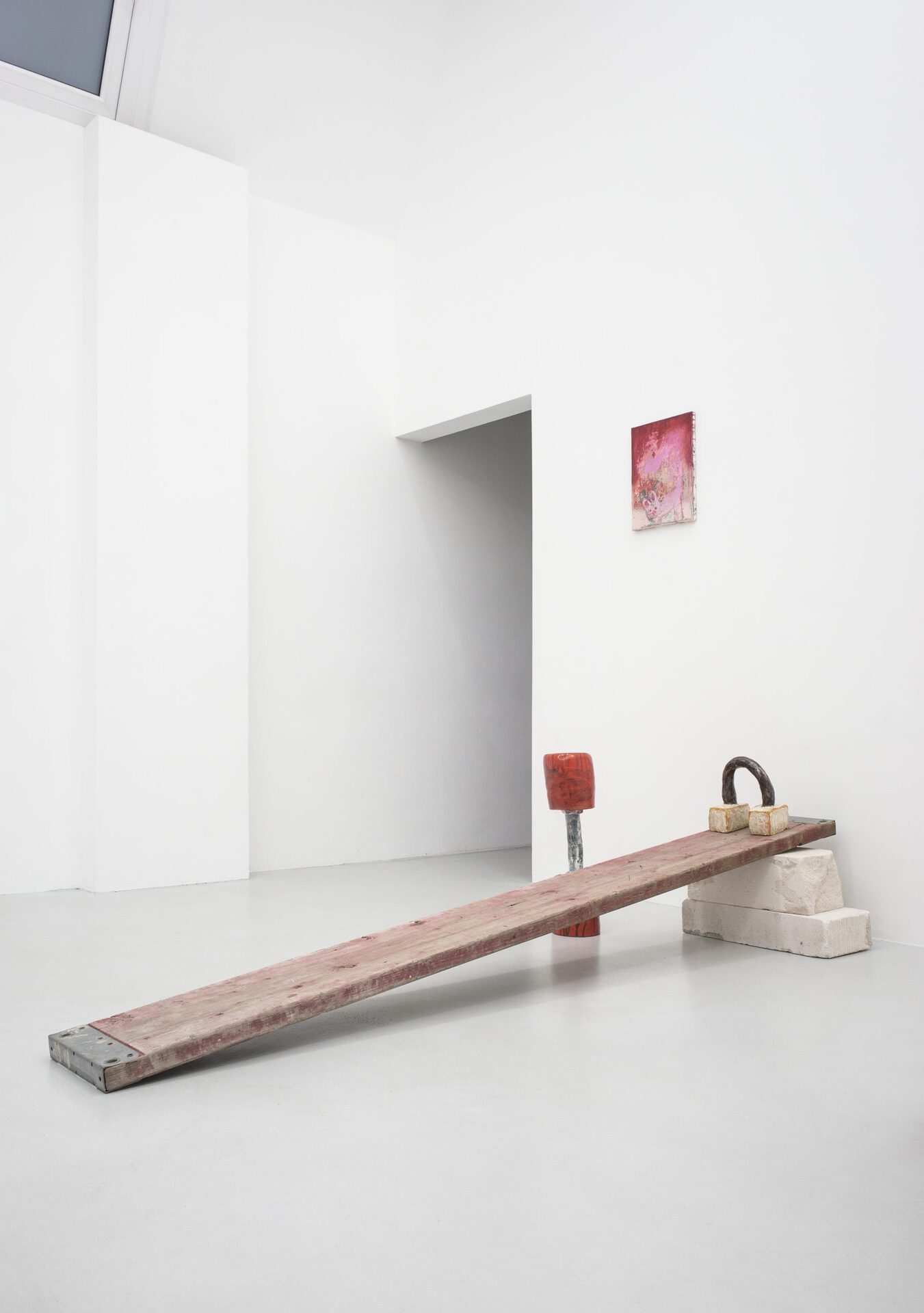
Location
fiebach, minningerDate
04.12 –29.01.2021Photography
Martin PlüddemannSubheadline
Harry Hachmeister solo show @ fiebach, minninger in Cologne with an interview between the artist and Luisa SchlotterbeckText
Harry Hachmeister in conversation with Luisa Schlotterbeck
The title of your exhibition Straße im Sonnenlicht (Street in Sunlight) is based on a painting by Felix Vallotton, whose painting shows an atmospheric depiction of a street with two small cats in the foreground. How did you come up with it?
I found the picture of Vallotton in a book about cats in art. It spoke to me immediately because it has such a calm, positive mood. That's exactly the feeling I wanted to evoke with the show. In addition, the works on view also feature cats and the allusion to a street scenario. The title was a perfect fit.
And how did the cats come about?
I had made one large pottery of a cat, which was originally intended for a major institutional solo exhibition (at the Museum of Fine Arts in Leipzig). Due to Corona, the exhibition has been postponed to 2021, but I didn't want to wait that long. I changed the concept for the show at fiebach, minninger a little, and decided “Große Mietz” (Big Kitty) shouldn't stay alone. That’s why I started to create more cats, a total of five, with which I also tried out different possibilities of representability. I depict animals quite often; what I find particularly exciting about cats is that despite all the domestication they have retained a remnant of wildness and maladjustment.
Your artistic approaches and confrontations have always been transdisciplinary; you studied photography and are institutionally valued for your self-portraits, whereby you always exhaust or expand the medium through drawing. You have also been in the context of painting for a long time and are often looking for painterly solutions. For some time now, more and more ceramics have appeared. How did that happen?
It all started with photography, it was my gateway to contemporary art, my ticket to art college and the first medium with which I could express myself. I studied artistic photography with Timm Rautert and began drawing and painting during my studies. I am mainly interested in people, bodies and sexuality, intimacy and vulnerability. Drawing enabled me to work on existing images. I also have a strong inhibition of photographing strangers because I'm not sure whether I am interested in them as an individual or just me or what I want to show. That's one of the reasons why I mostly take photos of myself. In recent years, objects have appeared in my work from time to time, often made from found materials. But I didn't really start to work sculpturally until 2018, through a grant (BS Projects) in Braunschweig. I had the opportunity to work in a ceramics workshop and that opened up completely new opportunities for me, which is great. Since I am interested in bodies, it also makes a bit of sense to go three-dimensional.
In my opinion, the sculptures create an interesting game of physicality and its environment. This large ceramic cat is rather two-dimensional. It looks like a backdrop on a stage (the scaffolding) and seems to have been taken from a painting and made tangible. Your ceramics all have a strong personality or individuality, as if they had their own character. This is fascinating, as it is not only about cats, but also about dumbbells and kettlebells, i.e. weights.
That’s a nice vision: the big cat has become independent and stepped out of a painting. I hadn't thought of that at all, which is probably because I never think too much while working. I follow more of an intuitive feeling and maybe that's one of the reasons why I mainly work analog. I can touch everything and experience it physically, especially when working with clay. I like that. And the personality - I think that's because I spend a lot of time with the ceramics. During the process, I keep on touching them, sanding them, polishing them and I check on how they are doing every day. I also knew that in the end they are objects that want to be held and touched. Ceramics just scream to be touched, don't they? With the dumbbells, the haptic element is reinforced by the handles. There are forms to grab. That's why I made this photo series on the street, of which three pictures are on show in this exhibition as wallpaper.
What is the relationship between body and space for you?
I basically live with my art. This year is the first time I have had an external studio, which made it possible for me to outsource the dusty work. Nevertheless, there are still many pieces hanging and standing around in my apartment. I have to live with some of them for a longer period of time until I know that they are finished and ready to go. There is no such thing as a separation for me, so to be honest, I've never really thought about it. Something completely different happens in the exhibition room than at home. Most of the time, I can't plan the outcomes ahead, I always go into the space with a selection of works and then see how the images and objects interact with one another and how they change as a result. That's the interesting part about exhibitions, I get to know the work all over again.
In this show you heavily involve the space. Is it always like that? And what role does ‘change’ play in your work?
I understand “doing an exhibition” as an independent artistic process. The installations are always temporary because spaces and times change and so do I as a person – as an artist. In this sense, a piece of artistic work is not a fixed thing for me. I rearrange works, change titles or go back to something old and renew it. I think my work is not that easy to categorize. I find bodies interesting when they are not perfect, when something is bothersome. A gentle subversion, I think that's nice. I just like it when things can't be assigned too easily; if they evade a market logic. As an artist, it is important to me to keep moving and to have the courage to dare to do something where I don't know for sure what will come out in the end. This risk keeps me approachable and vulnerable. I also talked about it with an artist friend of mine. He was very pragmatic on this point and said: it's great, if painting doesn't work out anymore, you can turn to sculpture or photography. (laughs) You can definitely see it that way.
Is this where the idea for the construction site comes from?
Actually, the idea arose from this photographic series, which can be seen here as a photo wallpaper. It has been a development from the object, to the photo, to the installation. I put the ceramics for the photographs in various places in the public space and had them carried, and then I noticed how well the sculptures work aesthetically in those situations. The awareness of the content came much later, as it is often the case with me. First, I showed the ceramic dumbbells in the obvious setting of a fitness studio; that notion got stale at some point. And then the question arose for me, where or how can these sculptures function differently. Fitness and construction sites are both places of transformation. Structure and muscle mass. The contrast between the dirty and the unfinished and this promising, beautiful, glittering, shiny thing - I found that exciting. I've already been asked if my work isn’t pretty masculine now, with the construction site and such. Like men's deodorant, fitness studios exude a certain 'masculine seriousness': they are black or gray in color and there is a lot of hard metal. I was interested in breaking this hardness. Cats don't have such masculine connotations per se, they bring a sense of lightness. At first I thought about making the dumbbells and weights out of plastic, but I was not interested in that manufacturing process and the associated environmental mess. I also experimented with paper mache – in any case I wanted them to be light or fragile – and then luckily I went into ceramics. And that also fits with the (building) blocks. In principle, I don't juxtapose materiality or play it off, but rather put it together in a different and new way.
Would you describe these sculptures in some way as intimate?
On the one hand, they have a certain intimacy – as I mentioned before – because I lived with them for so long and – without wanting to sound esoteric – I do give them a soul or try to work out their inherent soul or personality with a lot of love and tenderness. By touching and pressing them, I get very close. There is also the glazing process, which is a long, painterly process for me. Since I never see the end result during this, I have to be completely present and with the object, otherwise I will miss the right moment to stop. The feeling of loss of control is not nice, but usually the pleasant surprise you experience when the oven opens outweighs it. That element of surprise is comparable to the experience of opening an envelope of photos that has returned from the laboratory. In both cases something happens in the dark, the logics of which I can understand usually, but then sometimes I don't.
Luisa Schlotterbeck